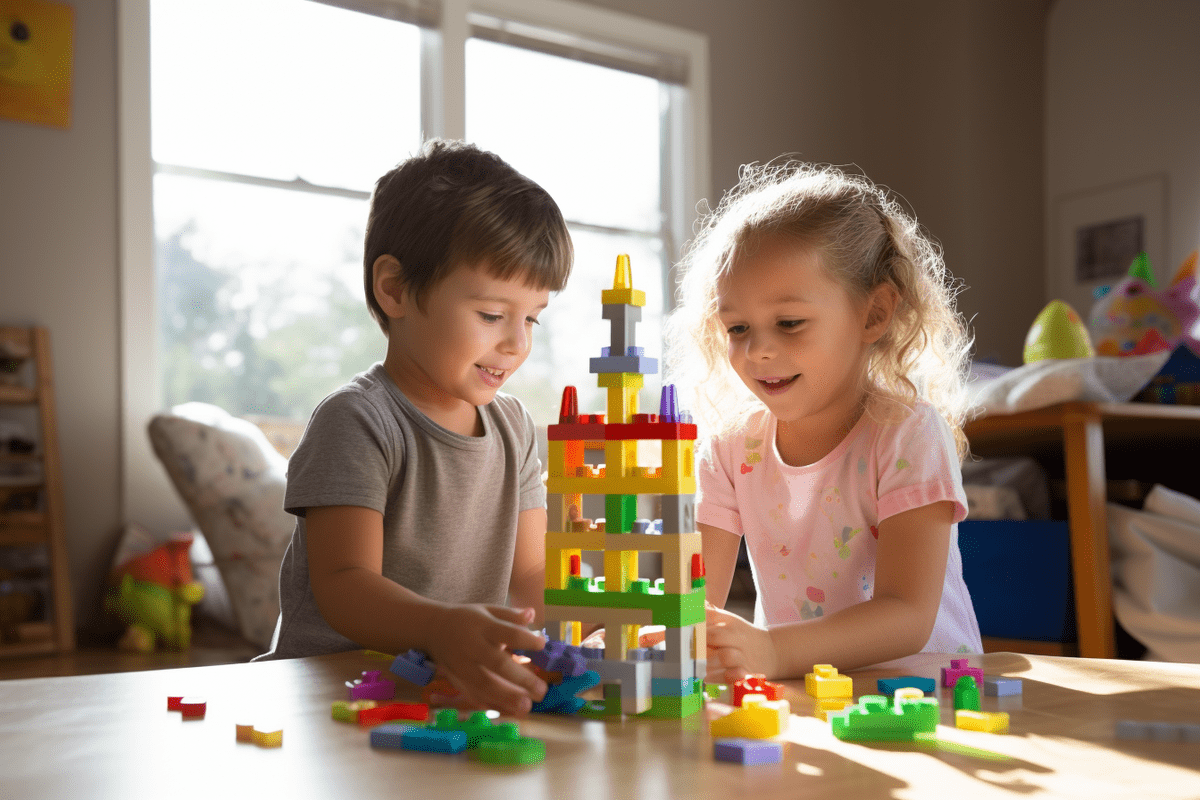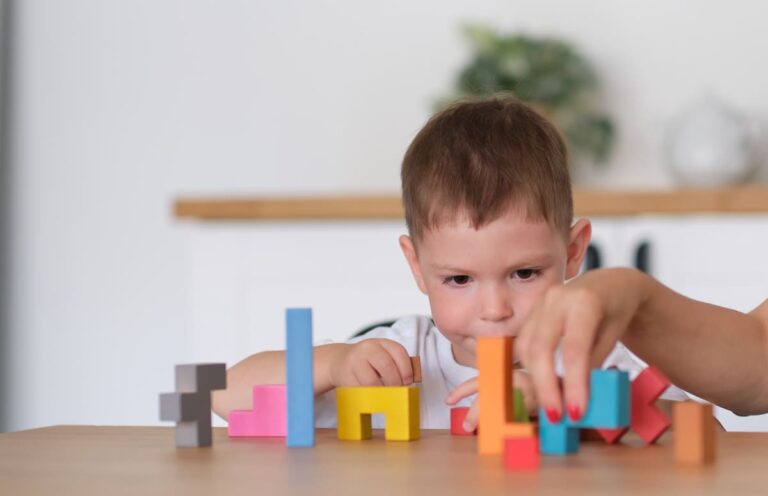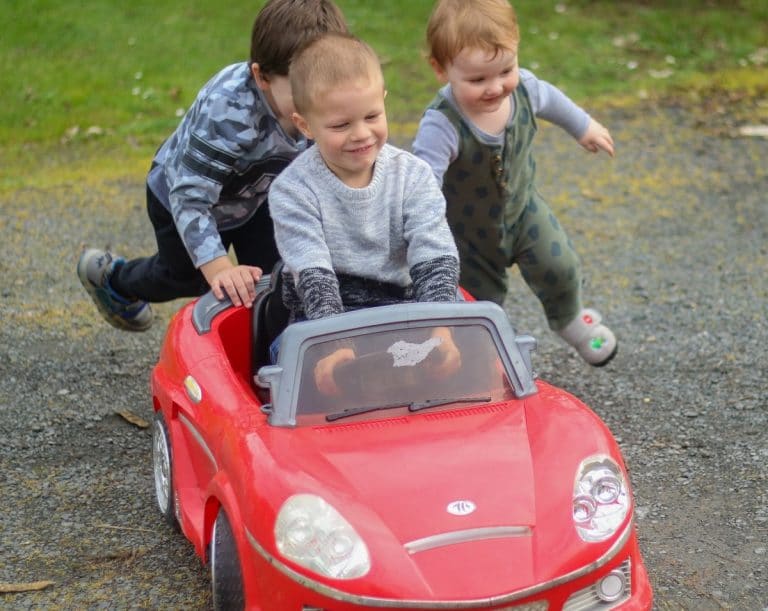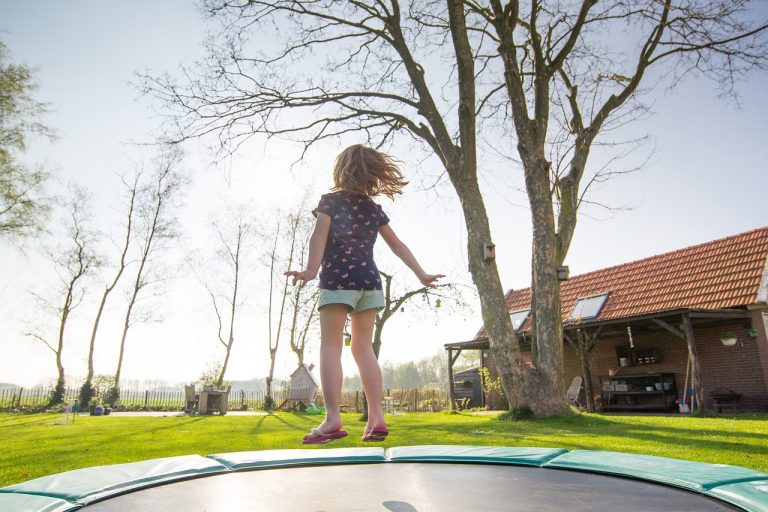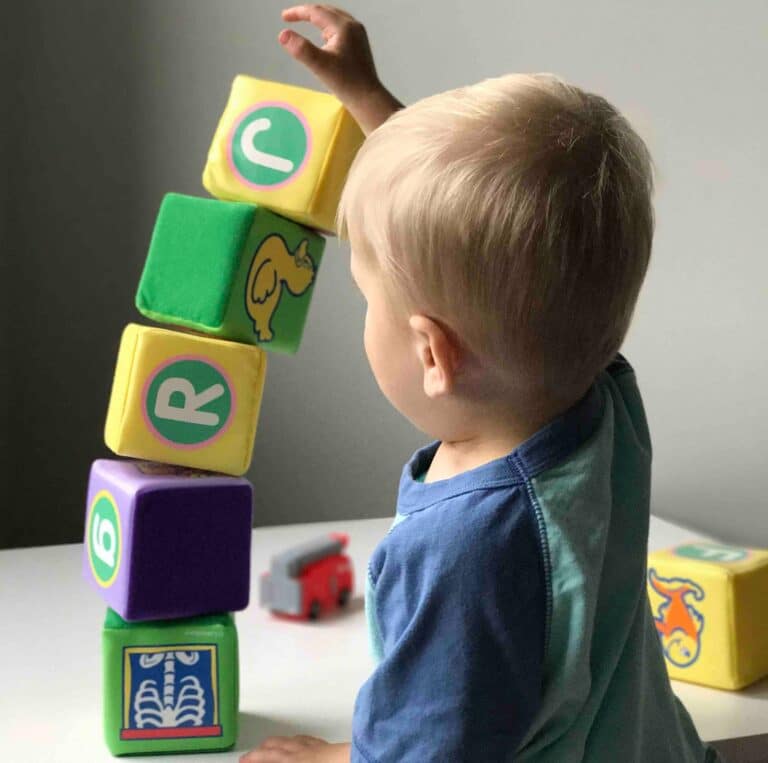Educational toys play a pivotal role in fostering early childhood education. They are designed to promote learning activities and mental development through play rather than just providing entertainment. These toys attract children’s attention and encourage creativity and imagination. This article aims to delve into the world of educational toys for kids, exploring their various classifications and how each category contributes to a child’s overall development. So, scroll down to know more!
Key Takeaways
- An educational toy is a type of toy that is specifically designed to promote learning and development in children.
- It can help develop various skills, such as fine motor, gross motor, problem-solving, creativity, and critical thinking.
- Educational toys are classified into several categories: STEM toys, building blocks, puzzles and games, art and craft kits, musical instruments, pretend play sets, language, and literacy.
In This Article
What are educational toys called?
Instructive toys, commonly known as educational toys, are specifically designed to promote learning for children of different ages. These toys stimulate perceptual learning and aid in the development of new skills, making education a fun and interactive experience. While all toys can be educational to some extent, these specific categories of toys have been designed and developed with the primary aim of promoting learning in young children.
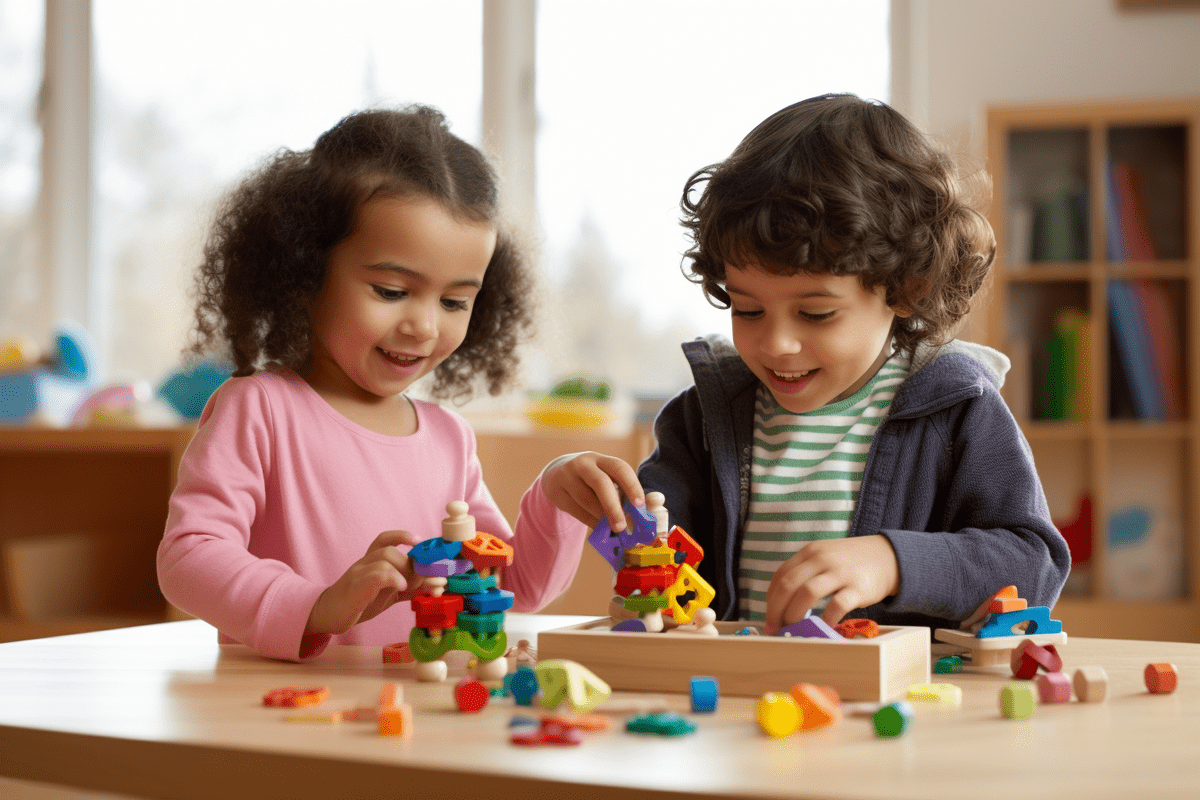
Classification of Children’s Educational Toys
Educational toys can be classified into various categories based on their purpose and intended learning outcomes. Some of the common types of educational toys are:
1. Sensory Toys
Sensory toys are specifically designed to engage a child’s senses. They incorporate various materials and objects that are safe for children of different ages to explore through touch, sight, sound, taste, or smell. Sensory toys can range from simple, everyday items to more specialized toys available in stores or online.
Examples of Sensory Toys: Some examples of sensory toys include textured balls, fidget spinners, slime, sand and water tables, musical instruments, light-up toys, and scent-infused play dough. These toys can be found in homes, schools, and therapeutic settings across the globe, and interest in them has spread to other countries as well.
Benefits of Sensory Toys:
- Stimulate the senses: Sensory toys help a child explore their five senses, making them more aware of their environment.
- Develop motor skills: Handling different shapes, sizes, and textures can improve fine and gross motor skills.
- Promote cognitive growth: Interacting with sensory toys can boost problem-solving skills and creativity.
- Enhance communication skills: Sensory play encourages children to express their experiences and emotions, improving both verbal and non-verbal communication.
- Encourage exploration and discovery: Sensory toys stimulate curiosity and a desire to investigate, essential skills for lifelong learning.
(Note: Parents and adults should consider incorporating sensory toys into playtime for children of all ages. They not only offer entertainment but also serve as powerful tools for development and learning.)
2. Movement toys
Movement toys are designed to engage a child in physical activities and promote active play. These toys encourage children of all ages to move around, thus improving their gross motor skills and overall physical health. They can be simple objects or more complex toys requiring coordination and balance.
Examples of Movement Toys: Examples of movement toys include scooters, bikes, jump ropes, hula hoops, pogo sticks, and balls of various sizes. These toys can be found in homes, schools, parks, and recreational centers, making physical activity an interesting and enjoyable experience for children.
Benefits of Movement Toys:
- Promote Physical Health: Regular use of movement toys helps maintain a healthy weight, strengthens muscles, and improves cardiovascular health.
- Enhance Gross Motor Skills: Activities such as jumping, running, throwing, and catching help develop coordination, balance, and agility.
- Improve Focus and Concentration: Physical activity can improve mental alertness and attention span, aiding in academic performance.
- Boost Self-Confidence: Mastering new physical skills can enhance a child’s self-esteem and sense of accomplishment.
- Encourage Social Interaction: Many movement toys are best enjoyed in groups, promoting teamwork, cooperation, and social skills.
3. Role-Play Toys
Role-play toys are designed to stimulate a child’s imagination and encourage pretend play. These toys allow children to act out different roles and scenarios, helping them make sense of the world around them. They come in all shape and sizes and are suitable for children of various ages.
Examples of Role-Play Toys: Common examples of role-play toys include dolls, action figures, dress-up clothes, toy kitchen sets, doctor’s kits, and playhouses.
Benefits of Role-Play Toys:
- Stimulate Imagination: Role-play toys allow children to create scenarios and stories, enhancing their creativity and imaginative skills.
- Develop Social Skills: Through pretend play, children learn about cooperation, negotiation, and empathy as they interact with others.
- Enhance Communication Skills: Acting out different roles and situations helps children improve both their verbal and non-verbal communication.
- Promote Problem-Solving Skills: Children often encounter ‘problems’ during their pretend play, which encourages them to find solutions and make decisions.
4. Manipulative Toys
Manipulative toys are designed to be handled, moved, and manipulated in various ways by a child hands. These toys aid in the development of fine motor skills and hand-eye coordination. They are suitable for children of all ages, with complexity varying based on the child’s developmental stage.
Examples of Manipulative Toys: Common examples of manipulative toys include building blocks, puzzles, lacing beads, stacking rings, and shape sorters. These toys require children to grasp, push, pull, twist, or connect parts, providing them with a hands-on learning experience.
Benefits of Manipulative Toys:
- Enhance Fine Motor Skills: Manipulative toys require precise hand movements, which help develop and strengthen fine motor skills.
- Improve Hand-Eye Coordination: The interaction between the eyes and hands while playing with these toys enhances hand-eye coordination.
- Promote Cognitive Development: These toys often involve problem-solving, planning, and understanding cause and effect, stimulating cognitive growth.
- Encourage Creativity: Building blocks and other similar toys allow children to create their own structures, fostering creativity and imagination.
- Boost Self-Esteem: Completing a puzzle or successfully building a structure provides a sense of accomplishment and boosts a child’s self-confidence.
5. Construction Toys
Construction toys are a popular type of educational toy that requires assembly. These toys often come in sets with multiple pieces that can be joined together to create structures, vehicles, and other objects. They are designed to attract children’s attention and engage them in hands-on, creative play. These toys are suitable for children of various age groups, with the complexity and size of the sets typically increasing with age.
Examples of Construction Toys: Common examples of construction toys include Lego sets, wooden blocks, magnetic building tiles, Meccano sets, and K’NEX. These toys allow children to build everything from simple structures to complex architectural models, providing endless possibilities for imaginative play.
Benefits of Construction Toys:
- Promote Cognitive Development: These toys encourage problem-solving, spatial awareness, and logical thinking, stimulating cognitive growth.
- Encourage Creativity: Children can use construction toys to create their own unique structures, fostering creativity and imagination.
- Improve Concentration: Building complex structures requires focus and patience, which can help improve a child’s concentration.
- Foster Teamwork: When used in a group setting, construction toys can promote cooperation and teamwork.
6. Electronic Toys
Electronic toys have become increasingly popular in recent years, thanks to advancements in technology. These toys are designed to be interactive and engage children with lights, sounds, and various activities that promote learning.
Examples of Electronic Toys: Some examples of electronic toys include interactive tablets, musical keyboards, coding robots, talking dolls, and virtual reality headsets. These toys often come with different levels of difficulty to challenge and engage children at various developmental stages.
Benefits of Electronic Toys:
- Enhance language skills: An electronic educational toy can improve a child’s vocabulary, listening, and comprehension abilities.
- Promote concentration: With their bright lights and sounds, electronic toys help children focus on specific tasks for longer periods.
- Develop problem-solving skills: Interactive electronic toys often come with challenges that require children to use critical thinking and problem-solving skills.
- Encourage creativity: Many electronic toys have open-ended activities that allow children to experiment and create, boosting their imagination and creativity.
(Note: As with all screen-time activities, parents and adults should monitor the amount of time children spend playing with electronic toys and encourage a balanced usage of other types of educational toys as well.)
7. Open-Ended Toys
Open-ended toys are those that allow for limitless play and creativity. These toys do not have a set purpose or outcome, allowing children to use their imagination and problem-solving skills to come up with different ways to play. Open-ended toys often have multiple components and can be used in various settings.
Examples of Open-Ended Toys: Some examples of open-ended toys include building blocks, play dough, dolls/action figures, puzzles, and construction sets. These toys have been around for ages and continue to be popular among children and adults alike.
Benefits of Open-Ended Toys:
- Encourage creativity: Without specific instructions or rules, open-ended toys promote creativity and imaginative thinking in children.
- Develop problem-solving skills: As children experiment and play, they learn to solve problems and think critically.
- Promote collaboration: Open-ended toys can be used with others, promoting teamwork and social skills.
- Extend playtime: These toys often have a longer lifespan as children can find new ways to use them as they grow and develop.
8. Science and Discovery Toys
Science and discovery toys are designed to introduce children to scientific concepts through play. These toys often involve hands-on experiments, allowing children to explore and learn about the world around them in a fun and interactive way.
Examples of Science and Discovery Toys: Some examples of science and discovery toys include microscopes, telescopes, animals models, anatomy kits, chemistry sets, and robotic kits. These toys are suitable for children of all ages and can spark an interest in various scientific fields.
Benefits of Science and Discovery Toys:
- Introduce STEM concepts: Science and discovery toys introduce children to basic STEM (science, technology, engineering, and math) concepts at an early age.
- Encourage hands-on learning: Children learn best through hands-on experiences, and science and discovery toys provide just that.
- Foster curiosity: These toys encourage children to ask questions and seek answers, promoting a curious mindset.
- Develop critical thinking skills: As children explore scientific concepts through play, they develop critical thinking skills essential for problem-solving.
(Note: Parents and educators can use these toys to introduce children to important scientific topics and foster a love for learning.)
Tips on how to select the right educational toys
Choosing the right educational toys for kids can seem overwhelming, with so many options available. However, by considering a few key factors, you can make the selection process easier and more effective. Here’s a guide to help you:
- Consider Your Child’s Age: Choosing an educational toy requires age appropriateness. It should be challenging but not overly frustrating for your child. Ensure the toy aligns with its developmental stage by checking the age recommendations on the packaging.
- Align with Interests: Choose toys that align with your child’s interests. If your child loves animals, consider educational toys that involve animals. This will keep your child engaged and make learning more enjoyable.
- Focus on Skill Development: Choose toys that promote essential skills like motor skills, cognitive abilities, language skills, and social-emotional skills. For instance, puzzles enhance problem-solving skills, while building blocks improve fine motor skills.
- Safety First: Always check the safety features of the toy. Ensure there are no small parts that could pose a choking hazard for younger children and that the materials used are non-toxic and durable.
- Value for Money: Investing in educational toys is worth it. They’re durable and provide multiple learning benefits. However, a higher price doesn’t always equal better quality, so consider the toy’s value for money.
- Read Reviews: Online reviews from other parents can provide valuable insights into a toy’s educational value and durability.
Conclusion
To sum it up, there are countless educational toys available, each with its unique benefits for children. These toys provide a hands-on learning experience and promote various skills essential for a child’s development. By understanding your child’s interests and needs, you can select the right educational toys to enhance their growth and learning journey. Also, don’t forget to have fun and play alongside your child – after all, learning through play is the best way!
FAQs
What are the qualities of good toys?
Good toys are safe, age-appropriate, engaging, and educational. They stimulate creativity, promote skill development, and align with a child's interests. High-quality toys are durable, offer value for money, and encourage open-ended play.
What are Montessori educational toys?
Montessori educational toys are designed based on the Montessori method of education. They are typically made from natural materials and promote hands-on, active learning, encouraging children to learn at their own pace through exploration and discovery.
What are the characteristics of educational toys?
Educational toys are designed to promote learning and skill development. They stimulate cognitive, physical, and social-emotional growth. These toys are safe, age-appropriate, engaging, interactive, and align with a child's interests, encouraging exploration, creativity, problem-solving, and critical thinking.
What is toy pedagogy?
Toy pedagogy refers to the educational approach that uses toys as teaching tools. It recognizes toys' potential to stimulate cognitive, physical, and emotional development, facilitate learning through play, and enhance creativity, problem-solving skills, and social interaction in children.

